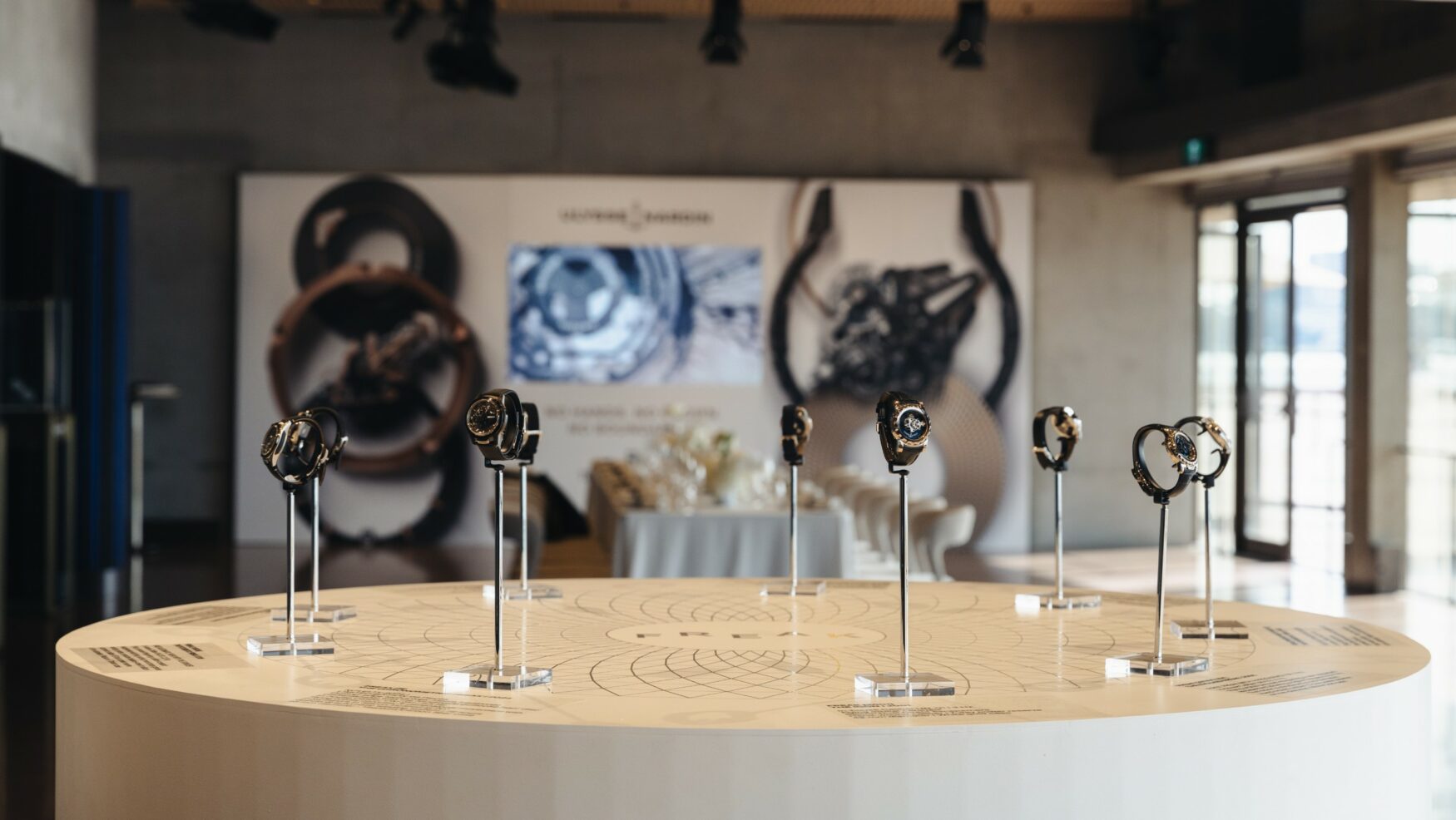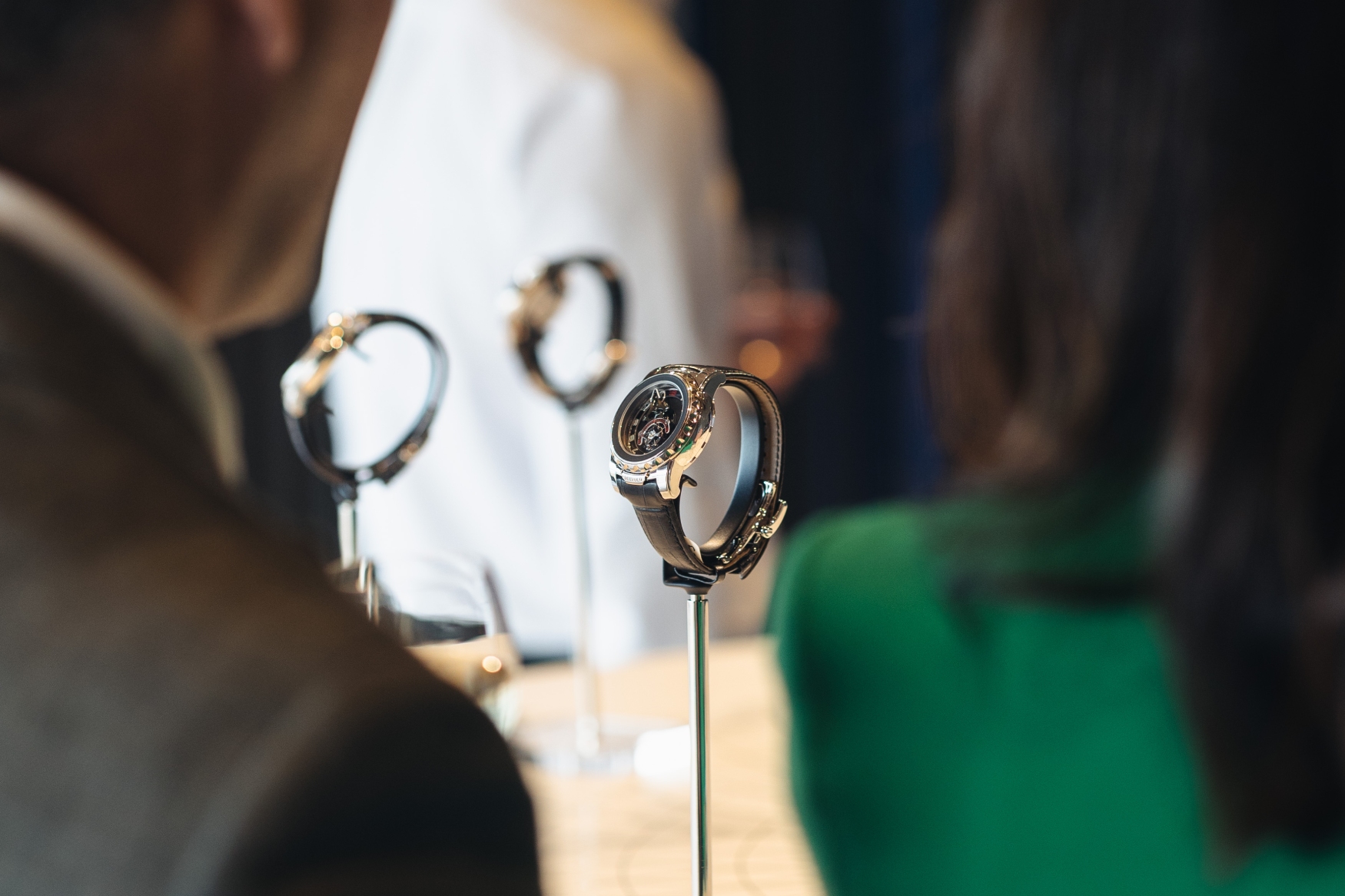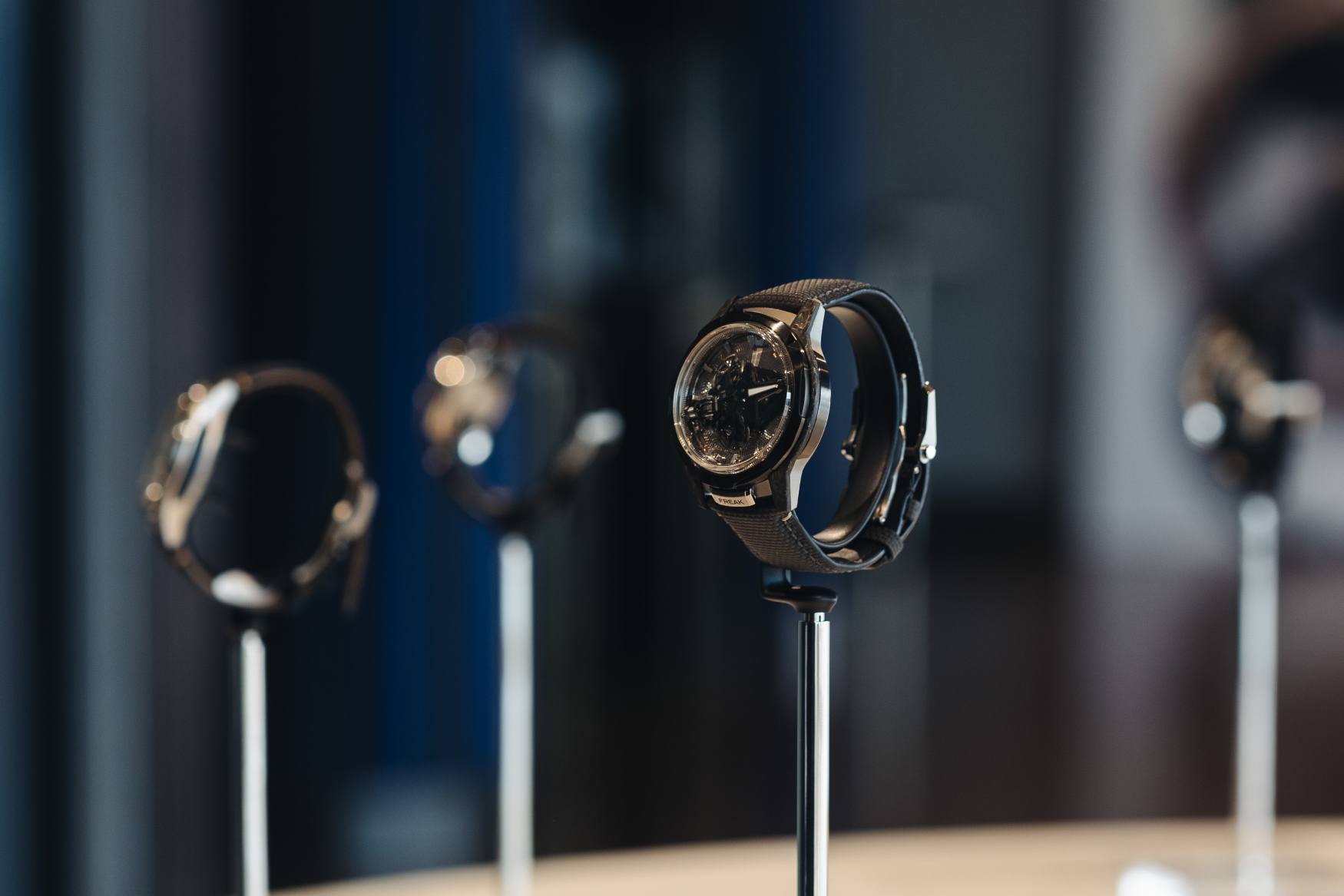How the Ulysse Nardin Freak changed the face of modern watchmaking
Luke BenedictusIn 2001, watchmaking decided to take a walk on the wild side. This was a year of weird and wonderful releases that included the Harry Winston Opus I and Richard Mille’s first watch, the outlandish RM 001. Yet the most mind-boggling piece of the lot came from Ulysse Nardin, a brand that was best known for their long history of making marine chronometers. The Freak was a radical departure from this tradition and indeed from modern watchmaking as a whole. Created by the maverick watchmaker Dr Ludwig Oechslin, here was a watch with no dial, no hands and no crown. Instead it presented a revolving movement featuring a gear train and escapement that rotated once every hour to show the minutes. It was a watch that defied all conventions and was indeed genuinely freaky.
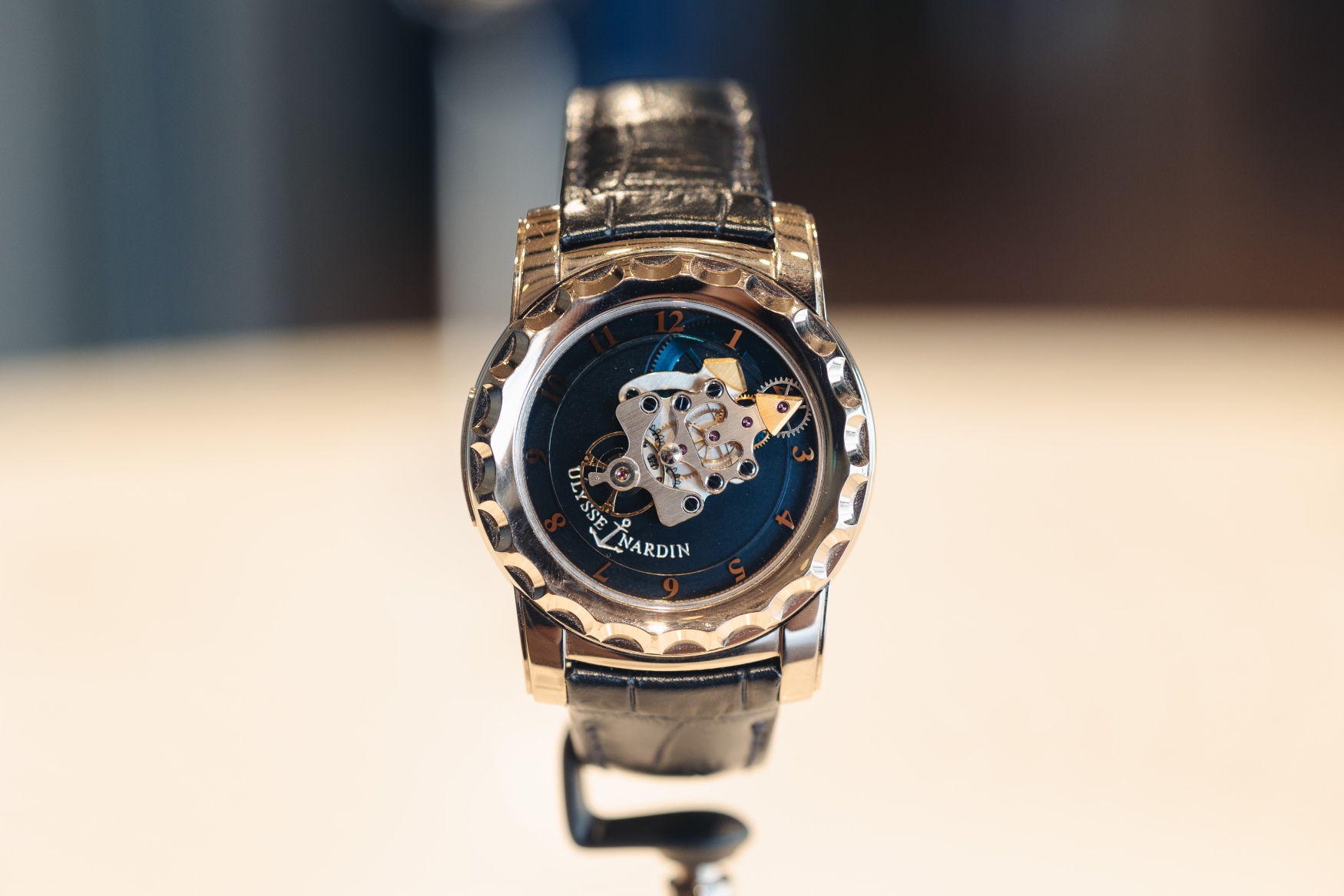
More than 23 years on, I sat down with Ulysse Nardin International Sales Director, Clémence Le Rolland at an event hosted by The Hour Glass to hear about the evolution of the Freak and how it shook up the watch world for years to come.
Time+Tide: So, it’s fair to say that 2001 was an interesting year for watchmaking….
Clémence Le Rolland: Yes, in watchmaking we really feel there was a “before” and an “after” with the Freak. That’s because it was a watch that introduced new [horological] architecture – for the very first time you had the entire movement that was telling the time. The Freak opened a new path for contemporary watchmaking.
T+T: Given how unorthodox it was, what was the initial reaction to the Freak like?
CR: The original reception, from what I heard, was that a lot of watch collectors and journalists didn’t really like it, because the Freak was really a beast. People didn’t understand it, and they found it pretty ugly to be frank with you. Many people were amazed by the technological concept of setting the time through the bezel, but a lot of watch collectors thought the Freak was not appealing in terms of its design.
T+T: What can you tell me about the watchmaker behind it, Ludwig Oechslin?
CR: Ludwig had a completely different perspective and approach to watchmaking because he came to it after studying archaeology and astronomy. He was really more of a mathematician than a watchmaker. He became famous for his series the “Trilogy of Time” which incorporated three watches. First there was the Astrolabium watch that introduced a mechanism that requires adjustment once every 144,000 years. Then he devised the Planetarium and the Tellurium, all of which were extremely complicated, too. From there, he developed a perpetual calendar that was the first to be adjustable both forwards and backwards. So right from the beginning, Ludwig brought a new angle to watchmaking.
T+T: Break it down for us – why was the Freak such a big deal when it came out for the watchmaking world?
CR: The Freak really changed the face of contemporary watchmaking because of its architecture. It was the very first time that a watch had an architecture in which almost 90% of the watch consisted of moving components and where the entire movement was doing a revolution every 60 minutes in order to tell the time. It was seen as a breakthrough because it was completely unexpected and opened the path to a new form of creative watchmaking.
T+T: But it was also innovative in terms of the materials it harnessed, too…
CR: Yes, it also introduced silicon as material in the escapement. The reason why we used the silicon in the very first Freak in 2001, it was because we had the dual escapements and the flexibility of the silicone make it viable. So we were the first brand to introduce silicon into watchmaking 2001.
T+T: Was the brand aware of just how innovative the Freak was at its release?
Rolf Schneider, the head of the company, really wanted to create a watch that was truly avant-garde. At its launch at Basel World 2001, Rolf and Ludwig went on stage completely dressed up in carnival masks to express the craziness of their vision. I think a key factor behind the Freak was the freedom to create something completely unexpected. Rolf didn’t really care about the feedback or the response. The watch was made to fulfil a dream of offering something completely different and a true breakthrough.
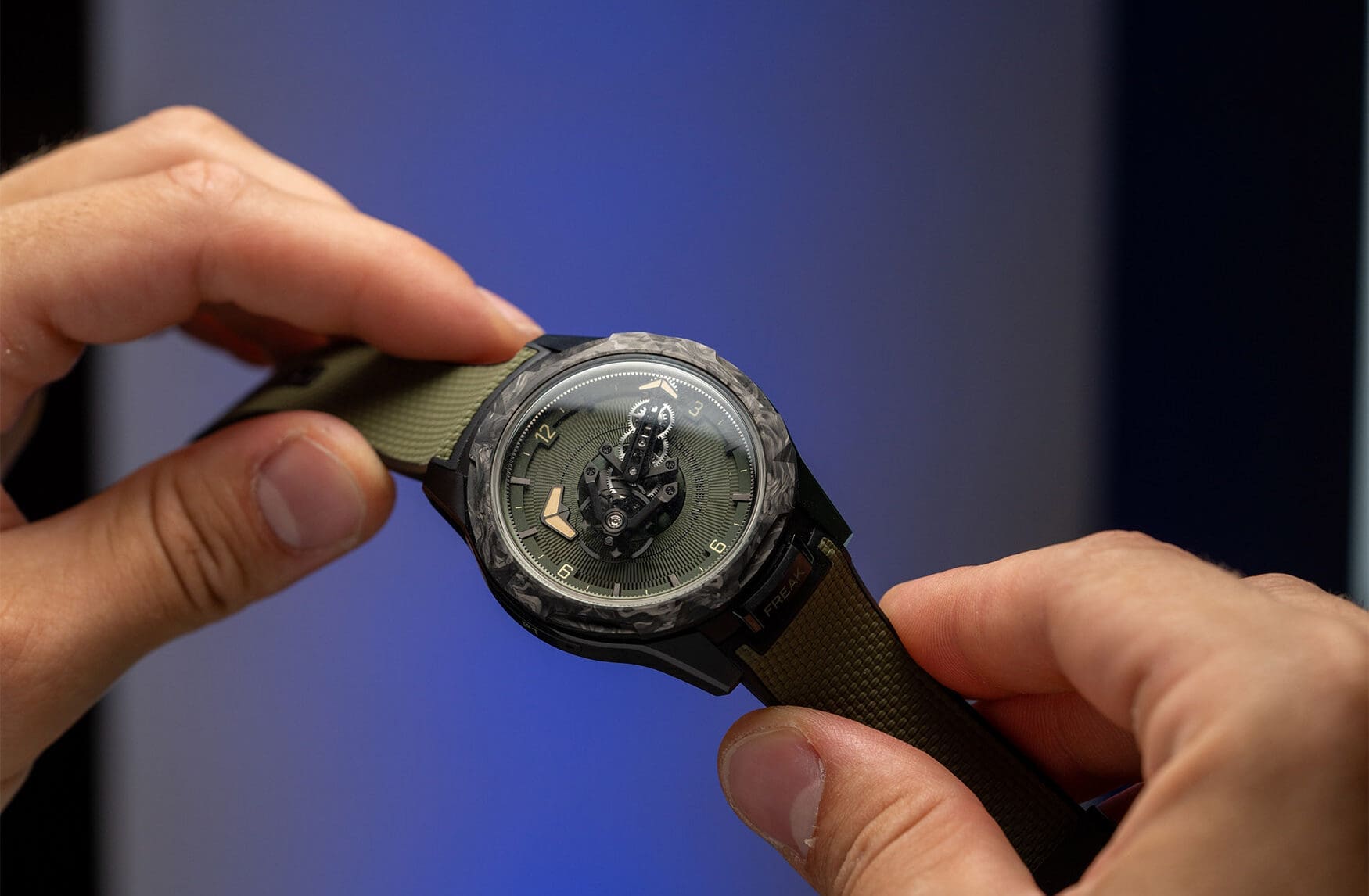
T+T: How many incarnations of the freak have there been?
CR: More or less 12 iterations and more than 20 patents.
T+T: The latest of these is the Freak S Nomad that came out this year. What do you feel it brings to the Freak family?
CR: What I really love about the Freak Nomad is that, once again, we came with something that was a bit unexpected. We kept the cutting-edge technology with the double oscillator inclined at 20 degrees and the “Grinder” automatic winding system that generates power two times more efficiently than conventional winding systems. But we’ve combined that with true métiers d’arts like the guilloché hour plate. Usually, in watchmaking, you go one way or the other way, you lean more towards the technology or more towards the craftsmanship side. But this watch is, in fact, a fusion of 18th century and 21st century.




